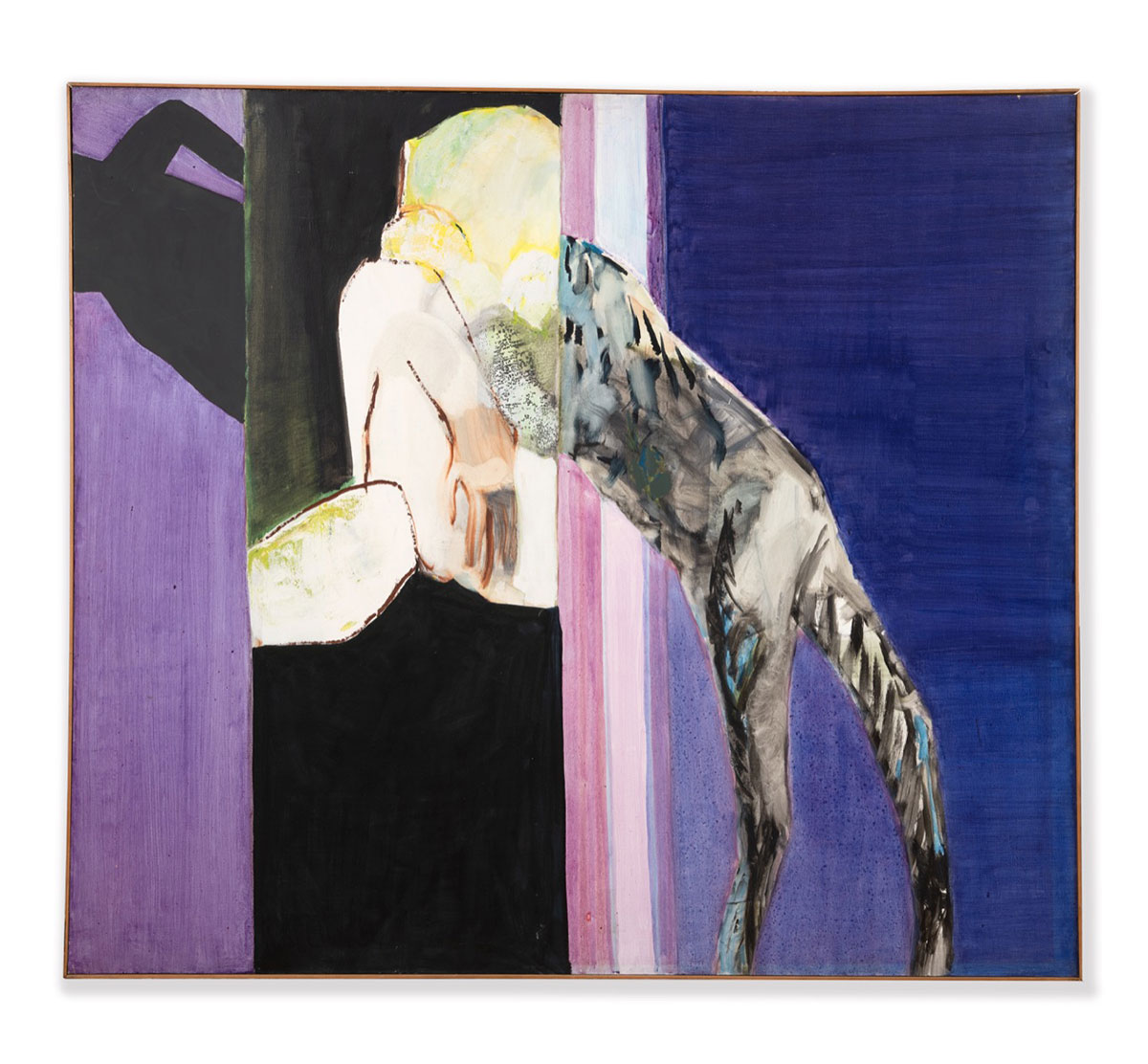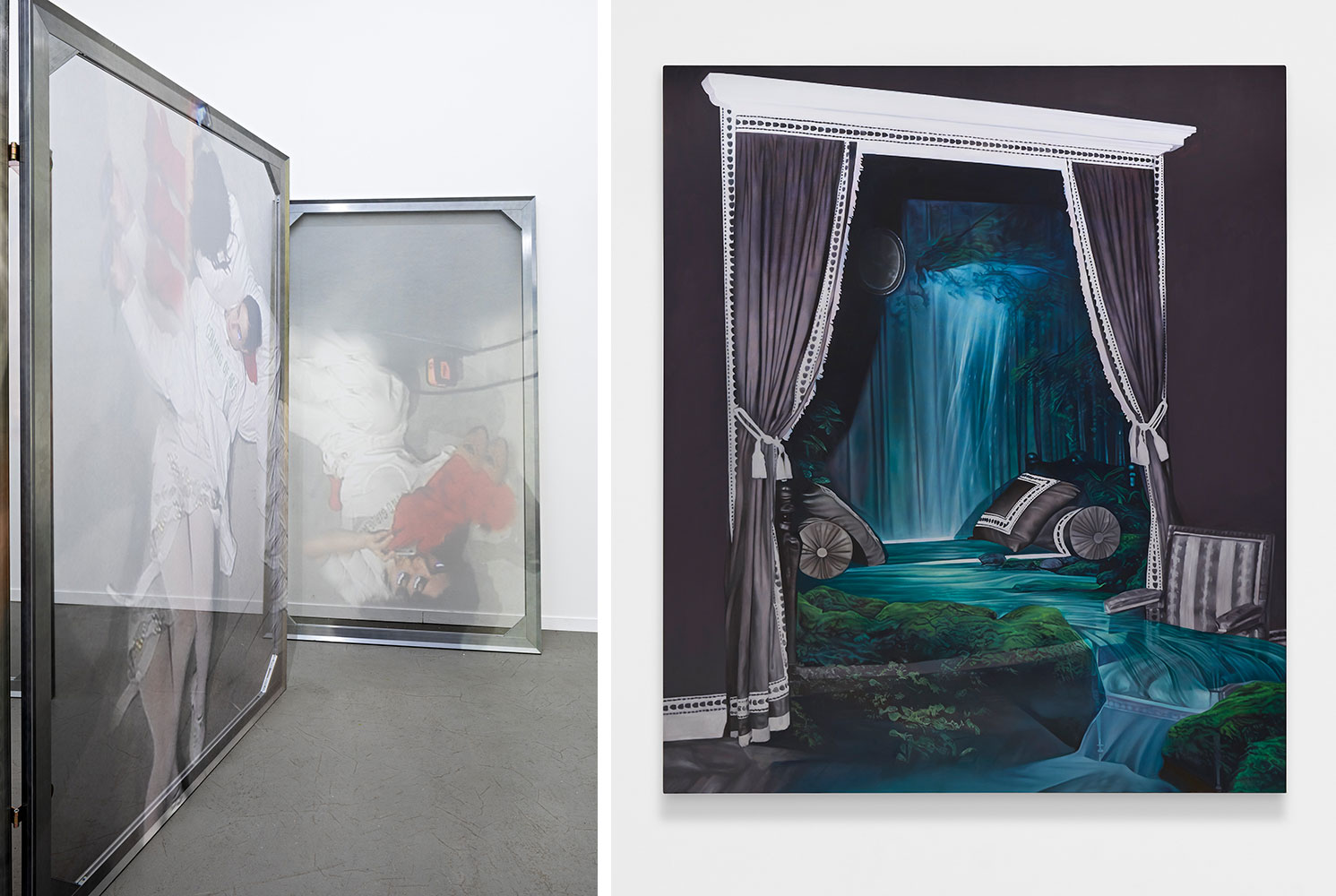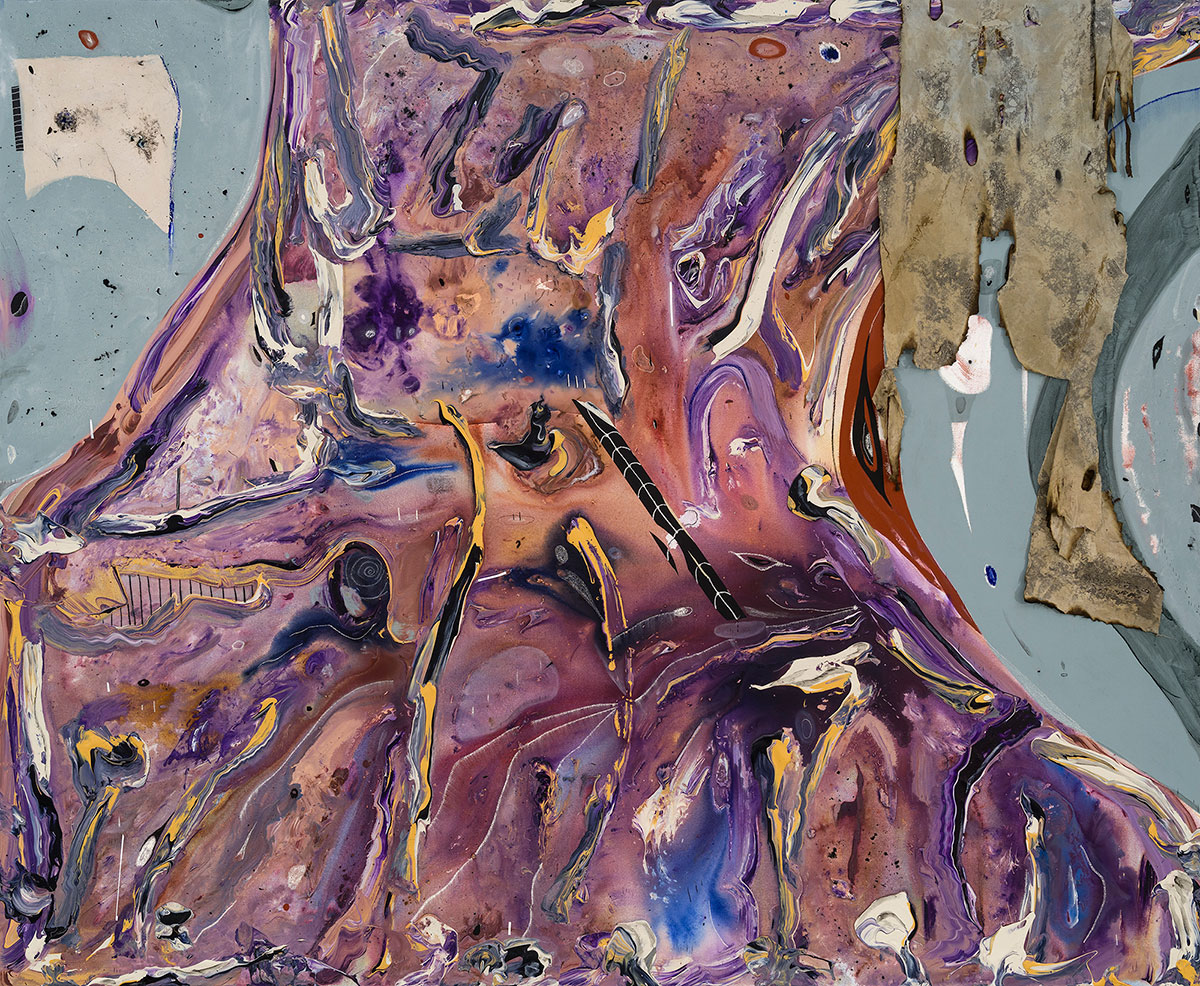ART CITIES: Paris, Re-enchantment
The word Re-enchantment which is increasingly present in the cultural landscape, counters disenchantment, a concept Max Weber linked to modernity’s rationalization after WWI. Enchantment is succumbing to magic, while re-enchantment entails repairing the world through wonder, fostering an ethic embracing mystery. The group exhibition “Re-enchantment: addresses a demystified, ecologically damaged reality shaped by hyper-rationalization.
By Efi MIchalarou
Photo: Thaddaeus Ropac Gallery, Archive
In the context of the exhibition, re-enchantment is to be understood in the magical sense, but also in a political and ecological sense. The artists on view tend towards re-enchanting the world by im-buing reality with imagination and by collaborating with living matter rather than instrumentalising it. Magic is a tool that defamiliarises the everyday. By moving away from a linear perspective and favouring multidimensional viewpoints, the artists strive to reinvent our relationship with the reality that surrounds us. Some artists invert the hierarchy between landscape and figure; others merge human figures with the animal, mineral and plant realms. Other artists give free rein to the transformative power of materials, which evolve over the course of the exhibition. Through these images and processes, they counter an anthropocentric view and blur the boundaries between human and non-human. The distinction between dreams and reality is also softened by works that juxtapose both a realistic and a dreamlike dimension. In some works, dream space is superimposed onto reality. Teresa Pągowska draws on women’s embodied experience of their surroundings, as well as her own dreams, which she materialises onto the canvas. The dreamlike, sensory pictorial experience is echoed in the phantasmagorical paintings of Ariana Papademetropoulos for whom ‘painting is a portal to another world’. In their canvases, human figures fuse with the animal and plant realms, expressing a strong desire to connect with nature. The softening of boundaries between the human and the non-hu-man is expressed not only through representation, but also through the very processes of making. Angelika Loderer uses aerial mycelium from mushrooms that consume photographic images. The works transform over the course of the exhibition, much like Bianca Bondi’s mineral installation, whose elements crystallise gradually. In her sculptures, Shuyi Cao assembles a myriad of materials, from seashells to bioplastics, glass and fake nails, which are metamorphosed into imaginary beings. In her paintings, Olga Grotova incorporates earth and the imprint of plants from the communal gardens of her grandmother and great-grand-mother, who were condemned to forced agricultural labour during the Soviet era, alongside millions of other women. By experimenting with materials, and in light of transgenerational research, the artist uncovers the history of these invisibilised women. The surfacing of collective trauma also takes place in the works of Manuel Mathieu who manipulates the texture and transparencies of his canvases until an image pierces through. His landscapes reveal tears and wounds that allude to the horrors of the Duvalier dictatorship in Haiti (1957–1986), while also communicating a vitality that pulsates on the surface of the canvas, suggesting the possibility of renewal. In their works, several time-spaces coexist on the same canvas, revealing the extent to which history is lodged in matter. Wanda Mihuleac reminds us that ‘in the word re-enchantment we hear CHANT, to sing’. In her tautological poems, the artist writes words with the substance they are made of, disrupting the distinction between language and materiality. Poetry, but also storytelling and mythology, offer a different way of relating to the world and accessing knowledge through metaphor and symbol. Drawing inspiration from Slavic folklore, the artist duo Dorota Gawęda & Eglė Kulbokaitė propel “Południca”, a mythological figure that haunts field workers, into the age of artificial intelligence. The resulting mirage-installation, which features chimerical flowers, blurs the distinction between nature, the human and technology. Suspended from the ceiling, Bianca Bondi’s mobile sculptures catch the light which dances across the room, casting spells in the exhibition space. Transparency also emerges at a conceptual level as a referent for invisibility. Angelika Loderer explores the imperceptible networks of mycelium, the ‘internet of forests’ that allows different species to communicate with each other, while Eglė Kulbokaitė & Dorota Gawęda’s translucent screens remind us of the omnipresence of the virtual realm. Through processes of layering and revelation, Olga Grotova makes visible the lost histories of communities and families in the former Soviet states, rather than established narratives dominated by the ‘history of great men’. Angelika Loderer’s works include both images from the everyday and of endangered species. The curatorial format allows a sensory journey through Wanda Mihuleac’s poems. In the first room, she sculpts shadows, slit, water, earth, fire and reflection – words that resonate with the other works on view, linking the artists together.
Participating Artists: Bianca Bondi, Shuyi Cao, Dorota Gawęda & Eglè Kulbokaitė, Olga Grotova, Angelika Loderer, Manuel Mathieu, Wanda Mihuleac, Teresa Pągowska, Ariana Papademetropoulos
Photo: Wanda Mihuleac, Ombre, 1976-78, 29,3 x 39,2 cm (11,54 x 15,43 in), © Manuel Mathieu, Courtesy the artist and Thaddaeus Ropac Gallery
Info: Curator: Oona Doyle, Thaddaeus Ropac Gallery, 69 Avenue du Général Leclerc, Pantin, Paris, France, Duration: 17/11-11/5/2024, Days & Hours: Tue-Sat 10:00-19:00, https://ropac.net/



Right: Ariana Papademetropoulos Invitation, 2024, Oil on canvas, 213 x 180 cm (83,86 x 70,87 in) Correction 233,7 x 200,7 cm (92 x 79 in), © Ariana Papademetropoulos Photo: Lee Thompson (Flying Studio) , Courtesy the artist and Thaddaeus Ropac Gallery
![Olga Grotova, Yavlenie (Appearing) [detail], 2023, Urals soil, Baikal lake lazurite, photograms and pigments, on linen, 150 x 110 cm (59,06 x 39,37 in), © Olga Grotowa, Photo: Eva Herzog, Courtesy the artist and Thaddaeus Ropac Gallery](http://www.dreamideamachine.com/web/wp-content/uploads/2024/02/04-10.jpg)

Right: Teresa Pagowska, © Teresa Pagowska, Courtesy the artist and Thaddaeus Ropac Gallery


